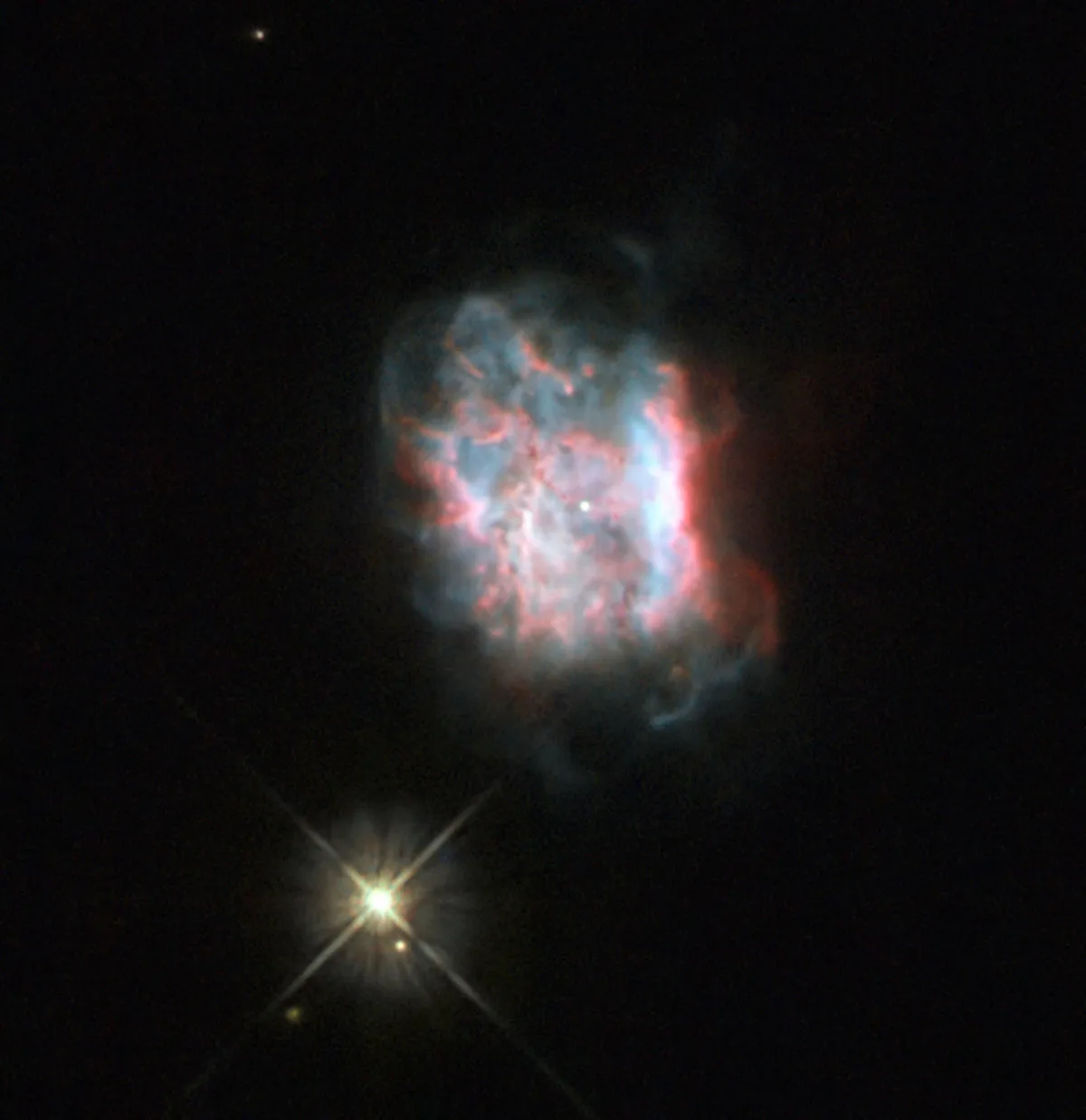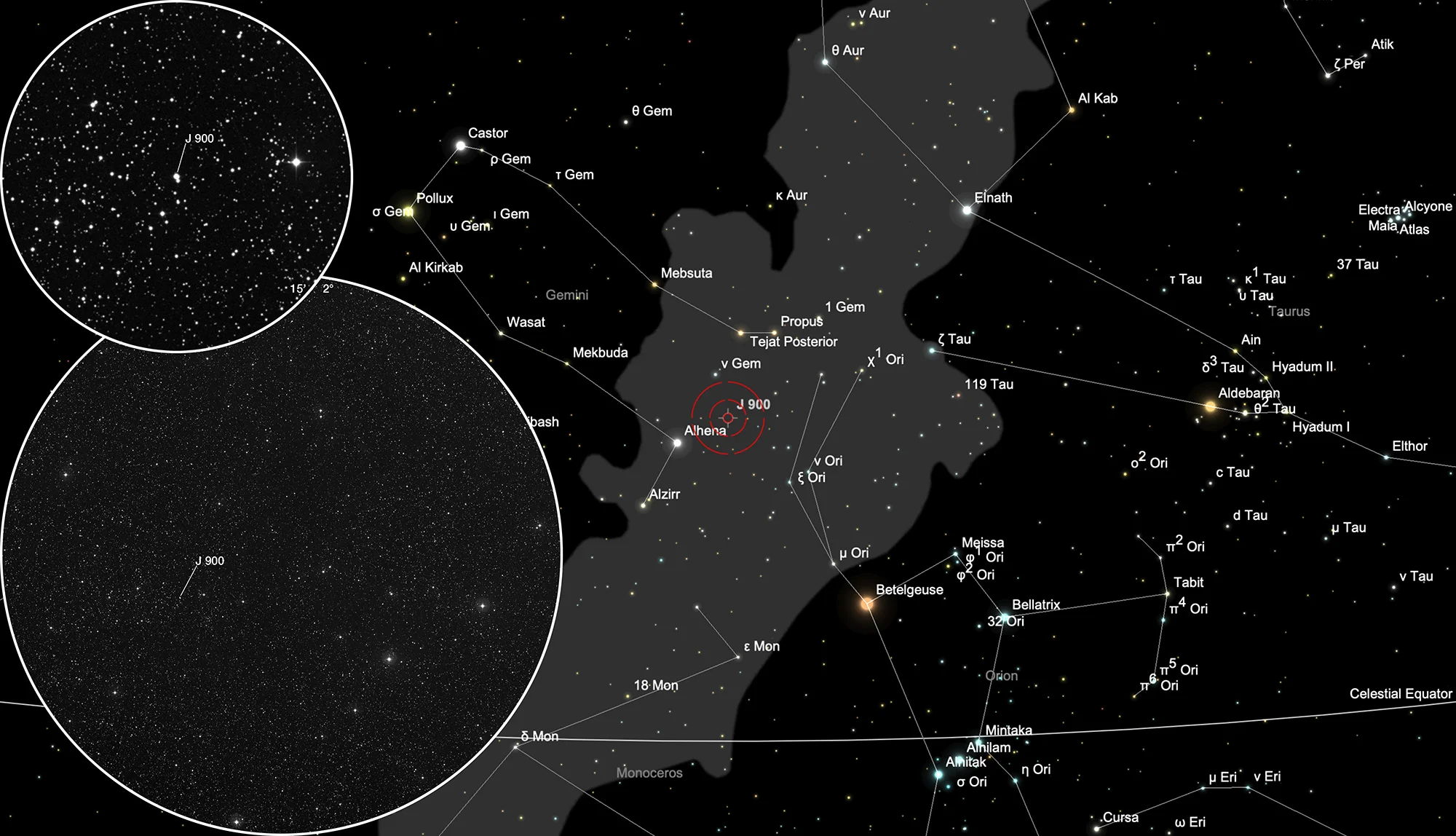Planetary Nebula Jonckheere 900

History
This nebula was discovered on 8 October 1912 by Robert Jonckheere at Lille University Observatory while searching for new double stars. He noted: «It consists of a planetary nebula 3" in diameter with two stellar points which form a double star at 148.0° 2.17", 9.8 and 9.8 mag. The total luminositoy of the nebula is about 9.5 mag and it takes a fairly high magnification to recognise its non-stellar character. There is a 10.3 mag star at 193.2° 11.1".» [42]
Physical Properties
J 900 is a planetary nebula, small but fairly bright with a relatively evenly spread central region surrounded by soft wispy edges. The nebula appears to display a bipolar structure, where there are two distinct lobes of material emanating from its centre, enclosed by a bright oval disc. [43] Simbad lists apparent magnitudes in different bands: V 12.5; G 17.11; J 11.6; H 11.2; K 10.1. Distance is ~3.9 kpc. [145]
| Designations | PN G194.2+02.5: J 900, PK 194+02.1, ARO 92, VV 28, VV'44 |
| Right Ascension (J2000.0) | 06h 25m 57s |
| Declination (J2000.0) | +17° 47' 27" |
| Dimensions | 9." (optical), 6." (radio) |
| Distance | 2.0 kpc |
| Radial Velocity | +47.2 ± 0.4 km/s |
| Expansion Velocity | 18. (O-III) km/s |
| C-Star Designations | AG82 63 |
| C-Star Magnitude | V: 17.8 |
| C-Star Spectral Type | WC ? |
| Discoverer | JONCKHEERE 1916 |
Finder Chart
The nebula Jonckheere 900 can be found in the contellation Gemini. The best time for observation is in the months August to June.
